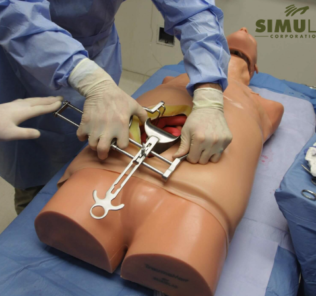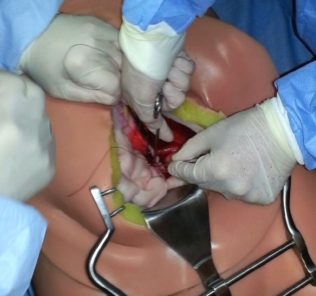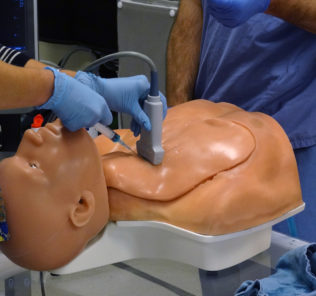Meet Simulab – A Video Introduction
I first connected with Simulab at IMSH earlier this year when I spoke with their COO Doug Beighle, and learned that over 35,000 doctors are trained with Simulab products in the US each year for traumatic surgical procedures. From our very first conversation, I immediately gathered a sense that unlike some other industry vendors that build a product first and hope it fits your needs, Simulab is a company that instead really listens to professional healthcare educators in-order to create and update products that specifically fits their customer’s needs. What the video below learn more about my introduction to Simulab:
Doug: Traumaman is the mostly widely used surgical simulator in the world. 35,000 doctors are trained every year with TraumaMan for traumatic surgical procedures and so what our customers have asked is “Give us more!”. Simulab has added a head to the TraumaMan system and an entirely new lower half to the trainer called the Surgical Ab, which is for open surgical procedures, trauma related procedures, but it is now a platform. We are here to listen to our customers and say “What surgical procedures do you want to the abdomen.
Sponsored Content:
Simulab started seventeen years ago with a real drive to have the finest soft tissues simulations in the world and to have our tissues really emulate a lot of the human factors. So if you cut the tissue it bleeds, if you use ultrasound it looks like an ultrasound image, if you put a catheter or needle in it feels like the same resistance of the tissue plains of the human. We’re on our 6th generation of the tissue that inserts into CentraLineMan – so we really stay with our customers as they have asked for more and better fidelity.
Lance: Right so its like getting a free upgrade when someone continues to order the skins?
Doug: Yes and that’s the same thing with TraumaMan because now you can order the obese or standard tissue.
Eager to learn more I reached out to Simulab who sponsored my travel to various sites around the US that have been successfully utilizing their products. At each of these sites it was quickly and overwhelmingly apparent that Doctors, Nurses and other healthcare professionals were thrilled with advanced training opportunities inherent with the products and customer service support of Simulab.
Sponsored Content:
A note about this continuing video series: Simulab sponsored the production costs of this video but the individuals who were interviewed received no financial compensation in exchange for their participation. The personal views and opinions expressed below do not necessarily represent the views of a particular institution.
Above John Paige, MD Associate Professor Clinical Surgery at LSU Health and Director of the American College of Surgeons Credit Institute Learning Center explains “Even earlier this year we were at the consortium meeting is we provided feedback and they have already developed our suggestions. So, yes, I think Simulab is responsive and my impression is what they want to do is provide a product that the educators want to use and be responsive to what’s realistic.”
Ernest Wang, MD Clinical Associate Professor and Medical Simulation Program Director at NorthShore University Health System Center for Simulation and Innovation tells us “From a service standpoint Simulab has been phenomenal to work with – very responsive. The orders get processed very quickly and communication is great. When we need a piece of equipment, even when its last minute – it gets done. I’ve found them very reliable and when we run courses, that is one of the most important things, is to have reliable sourcing of equipments.”
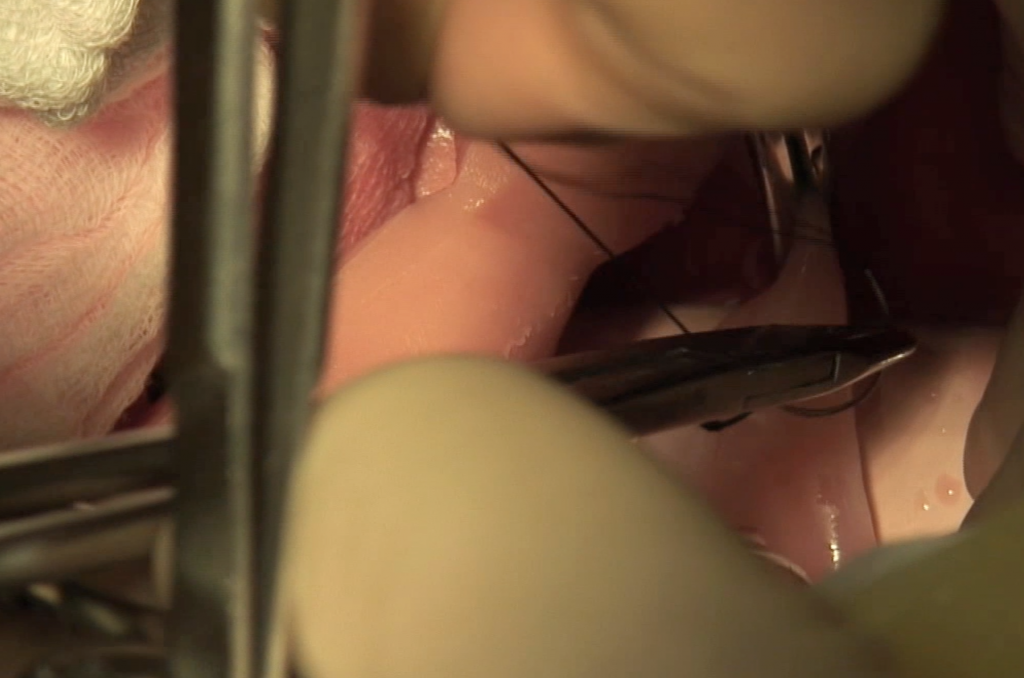
Jeffrey H. Barsuk, MD Northwestern University Feinberg School of Medicine Associate Professor in Medicine – Hospital Medicine shared with me that “I’ve been working with Simulab since 2006 and my experience is that they’re very responsive to their customers as well as feedback about their products. They take their products very seriously. For example, physicians had mentioned to customer support at Simulab that an articulating head would be very useful for proper central-venous catheter insertion. In response Simulab added such a head for the manikin, and the use of the head with the manikin has been very effective at making training more realistic.”
And Pamela Aitchison RN, Nurse Manager, Coordinator for Simulation at NorthShore University Health System Center for Simulation and Innovation suggested “In reference to TraumaMan, the amount of times we use him is frequently, at least three to four times a week. In fact since you came here this morning you probably noticed he was pretty beat up because we use him and he’s a well-used task trainer for us. TraumaMan has been a very useful tool for many of our students in learning different procedures and so it has made our lives much easier.”
In this continuing video series, we will be taking a hands-on look at Simulab’s Trauma Man and Central Line Man products to demonstrate their specific capabilities and training opportunities. We will also be sharing reduced infection rate research that powerfully connects training with Simulab products to huge cost saving ROIs for healthcare hospitals and systems, as well as sharing how Simulab’s scalable platforms can bring increased attention, utilization and growth to your simulation program.
If you are looking to purchase task trainers for any of the procedures below or interested in reducing infection rates in your medical program, then this is a must watch series.
TraumaMan Standard & Optional Systems
- Cricothyroidotomy
- Chest Tube Insertion
- Pericardiocentesis
- Needle Decompression
- Percutaneous Tracheostomy
- Diagnostic Peritoneal Lavage
- IV Cutdown
- Suturing, Incisions
- Catastrophic Event Team Training: Nicked Aorta Module (Flexible Abd. surgical space)
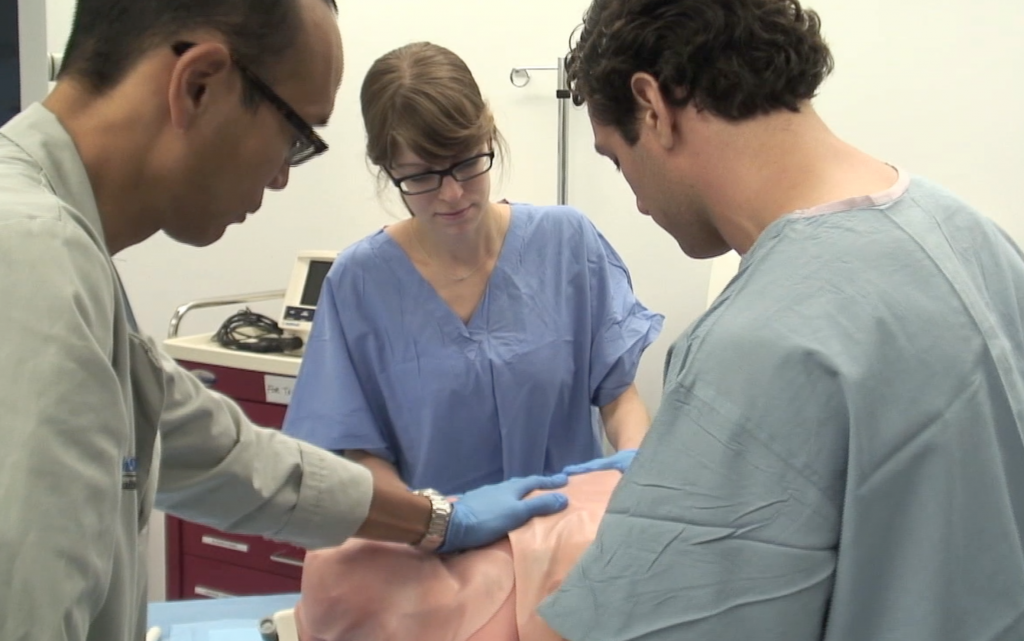
CentraLineMan Standard & Optional Systems:
- Central Vascular Catheterization
- Using Subclavian, Supraclavicular, and
- Internal Jugular approaches
- Sterile technique
- Locating vessels with ultrasound
- Inserting Needle
- Threading guidewire
- Passing dilator and triple lumen catheter
- Performing line maintenance
- Learning to use ultrasound guidance during catheter placement
- Locating vessels using palpable landmarks
Stay tuned here to HealthySimulation.com to continue watching this Simulab video series over the next month and visit Simulab.com to learn more now!
Check out Part 2: TraumaMan in-situ at the LSU Interim Hospital during a surgical abdomen scenario
Lance Baily, BA, EMT-B, is the Founder / CEO of HealthySimulation.com, which he started in 2010 while serving as the Director of the Nevada System of Higher Education’s Clinical Simulation Center of Las Vegas. Lance also founded SimGHOSTS.org, the world’s only non-profit organization dedicated to supporting professionals operating healthcare simulation technologies. His co-edited Book: “Comprehensive Healthcare Simulation: Operations, Technology, and Innovative Practice” is cited as a key source for professional certification in the industry. Lance’s background also includes serving as a Simulation Technology Specialist for the LA Community College District, EMS fire fighting, Hollywood movie production, rescue diving, and global travel. He and his wife live with their two brilliant daughters and one crazy dachshund in Las Vegas, Nevada.
Sponsored Content:






